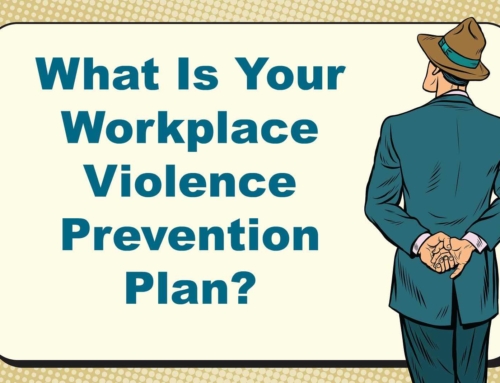 Potential Violence in Libraries Does Exist!
Potential Violence in Libraries Does Exist!
Potential Violence Scenario: 30 minutes before closing, a group of teenagers enter the library. It’s dark outside. Most of the other clients in the library have already finished studying, reading the periodicals, have scanned their books, and left for the night. As they pass you standing at the ‘Information Counter’, you smell alcohol and marijuana. They head for the back of the library. The remainder of the public nervously get up and leave.
Let’s look at the facts when determining the risk of potential violence in libraries, and the steps required to ensure staff safety.
The Public Library has always been a place which welcomes everyone. They’re designed to be informal, welcoming and accessible. Never where there should be potential violence in the workplace.
Unfortunately, that is one of the BIG PROBLEMS as far as staff safety is concerned. There is no screening of clients. It’s free. Open late. Staffed by employees chosen for their love of books, not for identifying aggression and potential violence…………..
Several risk factors associated with an increase in potential violence present within libraries:
- Dealing with the public,
- Dealing with strangers,
- Working alone, and
- Working at night.
Libraries can reduce these risk factors for potential violence by following several simple philosophies.
1. Train Library Staff:
Potential violence in the workplace shouldn’t be treated as an occupational hazard of working in a public library. It requires staff training to recognize situations that might escalate, steps which can be taken to avoid threatening, aggressive or violent situations, and how to protect themselves if and when they do occur.
2. Examine Your Organizational Procedures:
Consider the staff structure and practices of the library, and how they could be changed in order to reduce the risk of potential violence. Increase the number of staff that works in isolated situations. Look at the communication between members of staff, and even between staff and customers. Additionally, it’s well documented that consistent managerial support for front line staff aids them in displaying a more competent and professional image to the public. This acts as a deterrent to would be trouble makers.
3. Examine Your Library Design And Layout:
Is your library designed to reduce risks of potential violence and promote workplace safety? Or does the design assist in increasing the risk of potential violence? Are their hiding spots for trouble makers to lurk out of sight lines of the staff on duty? Is there good natural surveillance
from inside and outside the library? Are there CCTV cameras? Are there security guards? Are there staff panic alarms or emergency procedures in place? Are there signs warning of the consequences of disruptive behaviour? All of these (and many others) aid in reducing potential risk.
4. Customer Service Initiatives:
Legitimate customers of libraries can elevate and escalate their behaviour if they perceive that the systems in place are unclear; if they are frustrated by procedures; if they feel they are not being listened to or treated respectfully by staff. It is critical that any strategies implemented to reduce the risk for potential violence in libraries don’t compromise customer service measures. Developing and demonstrating ‘active listening skills’ will be one of the most important elements in staff to customer interactions in terms of reducing risk for staff.
5. Policies And Guidelines:
Clear policies and guidelines are crucial tools for library employees to understand what constitutes unacceptable behaviour on the part of customers. Clear policies are seen as providing protection for employees as they give clear instructions of what is expected from them in a variety of specific situations. The posting of clear and unambiguous signs for members of the public regarding what specific behaviours are not tolerated, are critical.
Even under “K” for Kissinger. Always be proactive…not reactive.
Stay safe at work!
Phil Eastwood






Leave A Comment